How Long Are Dogs Pregnant? Your Guide To Expecting Puppies
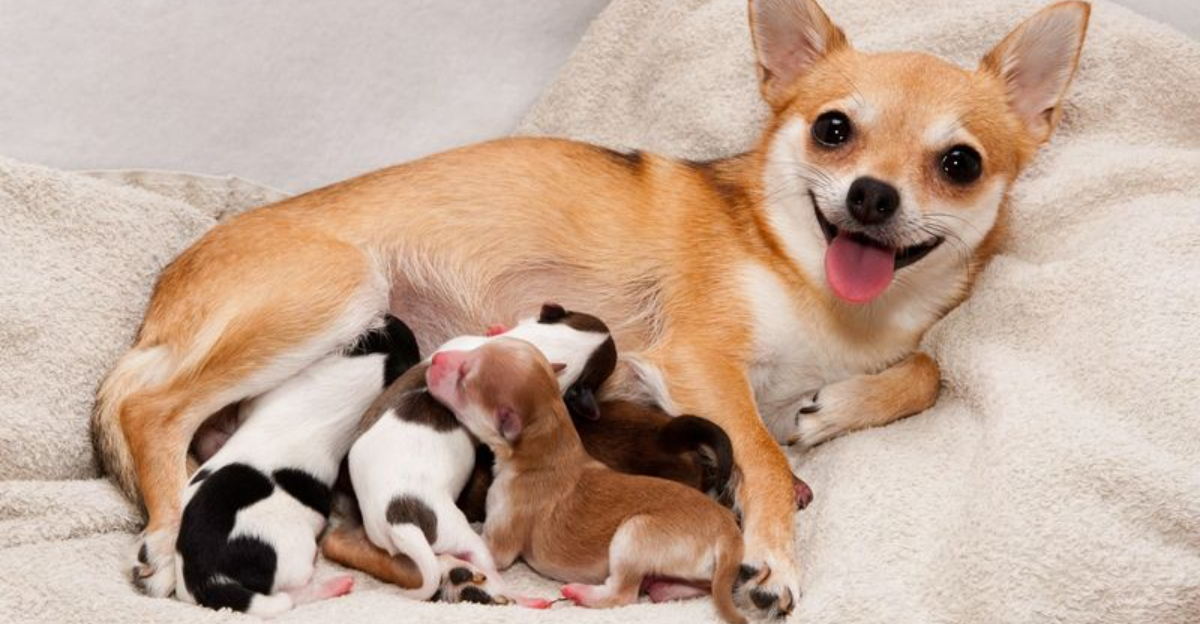
Curious about how long dogs are pregnant? In this friendly guide, we’re exploring the ins and outs of canine pregnancy.
Whether you’re a seasoned pet owner or a newbie, understanding your dog’s pregnancy journey can be both exciting and nerve-wracking.
Join us as we unravel the mysteries of this magical time and prepare you for the arrival of those tiny paws.
1. Early Signs Your Dog Might Be Pregnant

Is your dog acting a bit different lately? Early signs of pregnancy include increased appetite and nesting behaviors.
You might notice her becoming more affectionate or wanting extra rest. Physical changes, such as a slight belly expansion, can also occur.
These hints, though subtle, are clues to your dog’s new journey. Observing these early signs helps in preparing for the upcoming phases.
Just like in a detective story, these little hints lead to bigger discoveries. Keep an eye out, and you’ll start seeing the clues unfold!
2. How To Confirm A Dog’s Pregnancy: Tests And Vet Visits

Confirming a dog’s pregnancy requires a visit to the vet. Ultrasounds and blood tests are common methods used. It’s like going to a detective to solve a mystery!
Ultrasounds can detect puppies around the third week. Blood tests can confirm pregnancy by detecting hormone levels.
Regular vet visits ensure both mom and puppies are healthy. Your vet will guide you on what to expect. It’s reassuring to have expert advice during this period. Plus, you get to see those tiny heartbeats early on. Isn’t that exciting?
3. How Long Is A Dog’s Pregnancy, Really?

Dog pregnancies typically last about 63 days. This might seem surprisingly short compared to humans! The gestation period can vary a bit, from 58 to 68 days. During this time, your canine friend goes through significant changes.
Knowing the timeline helps you anticipate each phase. As the days pass, the excitement builds up. It’s like waiting for a special delivery!
The countdown begins from the day of conception. Keep a keen eye on her behavior and physical changes. She might get a bit more affectionate or crave extra food. It’s all part of the journey!
4. Understanding The Three Stages Of A Dog’s Pregnancy

A dog’s pregnancy is divided into three trimesters. Each stage is unique and reflects the growth of puppies inside.
In the first stage, tiny embryos start forming. It’s a period of rapid development. By the second trimester, you might notice a slight bulge in her belly.
Finally, in the third stage, it’s all about growth and getting ready for birth. Puppies are almost fully formed now. Understanding these stages can help you provide the necessary care and comfort.
It’s like watching a miracle unfold right before your eyes.
5. What Happens During Each Week Of A Dog’s Pregnancy
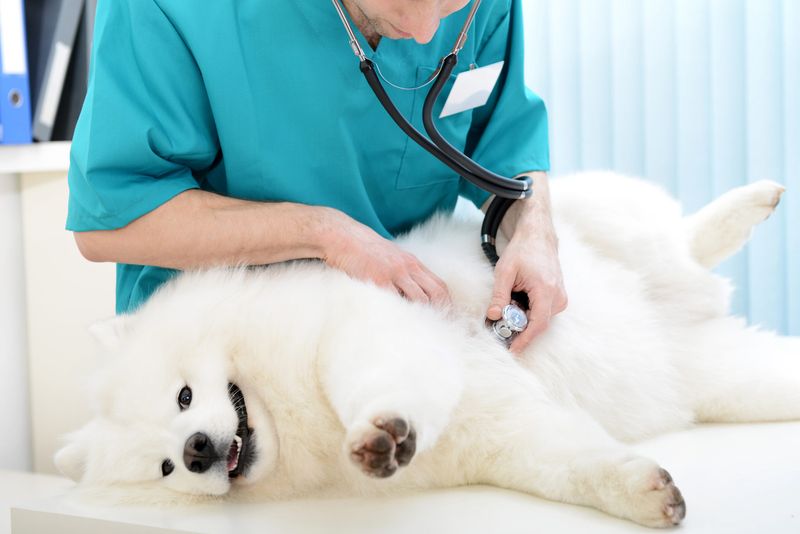
Week by week, remarkable transformations occur within your dog’s belly. Each week marks significant development stages for the puppies.
From the initial formation of tiny embryos to full-fledged puppies ready to greet the world, it’s an awe-inspiring process.
By the third week, heartbeats can be detected. By the sixth week, you can feel little movements. It’s like a countdown of anticipation and joy.
Keeping track weekly helps in understanding this dynamic process. Think of it as following a weekly guide to a heartwarming event.
6. How To Care For A Pregnant Dog: Nutrition And Comfort Tips

Taking care of a pregnant dog requires attention to her nutrition and comfort. A balanced diet rich in nutrients supports her and her pups.
Providing a cozy, quiet space ensures she feels safe. Pay attention to her body language for any discomfort signs.
Extra love and gentle playtime help in keeping her spirits high. Like nurturing a delicate garden, your care helps her bloom during this journey. Frequent vet check-ups are essential too. It’s all about creating a haven of love and comfort for her.
7. Warning Signs To Watch For During Pregnancy

During pregnancy, some signs indicate trouble. It’s crucial to recognize these warning signs to take immediate action.
Loss of appetite, lethargy, or unusual discharge may signal complications. Monitor her closely for any signs of discomfort.
Being proactive can prevent major issues. It’s like being a vigilant guardian, ensuring her safety. Stay in touch with your vet for guidance. Quick response can make a world of difference.
Remember, you’re her advocate during this time, and your watchful eye is her best defense.
8. Preparing For The Big Day: Whelping Supplies You’ll Need
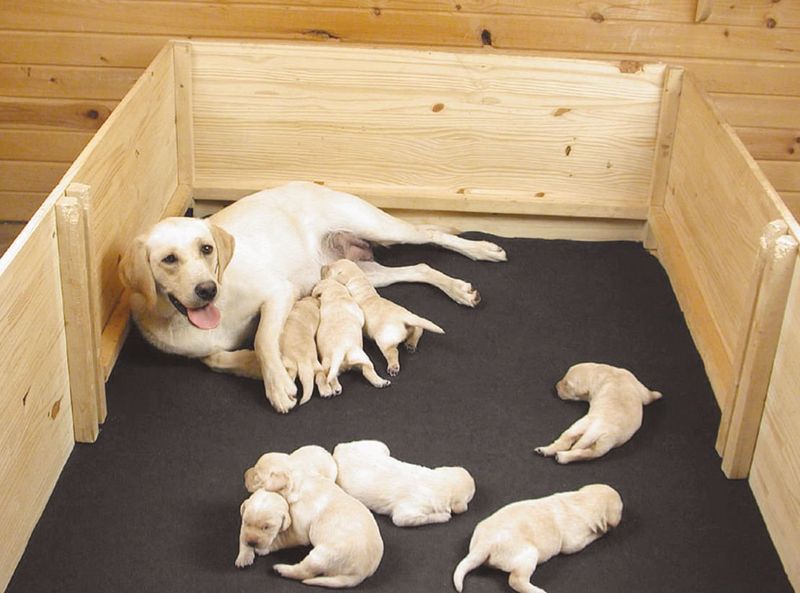
As the big day approaches, having the right supplies is crucial. Whelping kits include towels, heating pads, and a comfortable whelping box.
These items ensure a smooth delivery. A clean environment is vital for the newborn pups. Imagine it as setting up a cozy nursery.
Having everything ready reduces stress and helps you focus on the event. It’s all about creating a safe, nurturing space.
With these supplies, you’re all set to welcome the tiny newcomers! It’s like preparing for a joyous celebration in your home.
9. How Many Puppies Should You Expect?
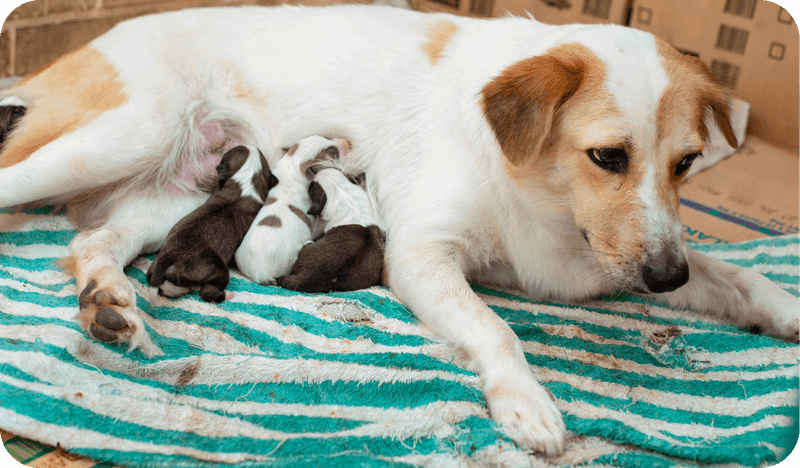
Wondering how many little ones will join the family? The number of puppies can vary based on the dog’s breed and size.
Smaller breeds tend to have fewer pups, while larger breeds can have more. Typically, litters range from one to a dozen puppies!
Knowing the expected litter size helps in planning and preparation. It’s like anticipating guests at a party. Your vet can offer a closer estimate through ultrasounds.
This knowledge allows you to ready your home for the new arrivals. It’s an exciting guessing game!
10. What Labor Looks Like In Dogs: Signs And Timing

Labor in dogs is a fascinating process. Signs include restlessness, nesting, and changes in body temperature. It’s like witnessing nature’s clockwork.
The timing varies, but most dogs go into labor around the 63rd day. Observing behavioral changes provides clues.
Keeping an eye on her helps you act promptly when the time comes. Understanding labor signs is like reading a natural script.
This knowledge prepares you for the arrival of the puppies. It’s a blend of anticipation and readiness!
11. When To Call The Vet During Your Dog’s Labor

Knowing when to call the vet during labor is vital. Signs like prolonged labor or distress need immediate attention.
Your vet provides guidance on handling complications. It’s like having a safety net during this crucial time.
Being prepared ensures a smooth process. Trust your instincts, and don’t hesitate to seek help. Your vet is a valuable ally.
Quick actions can make a difference in ensuring a healthy delivery. Remember, it’s a team effort between you and your vet.
12. Life After Birth: Caring For A New Mom And Her Puppies
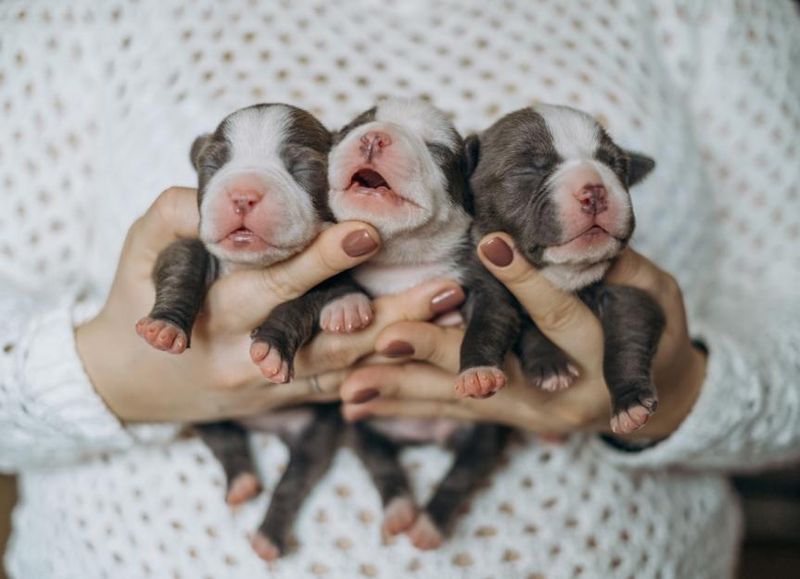
After birth, caring for the new mom and her puppies is essential. Ensuring she has enough food and water helps her regain strength.
The puppies need warmth and frequent nursing. It’s like setting a nurturing environment for a thriving family.
Keep the area clean and observe for any health issues. Your vet can provide advice on post-birth care. It’s a beautiful bonding time, and your support is invaluable. This phase is all about love, care, and attention.
13. How Long Should A Dog Wait Between Litters?
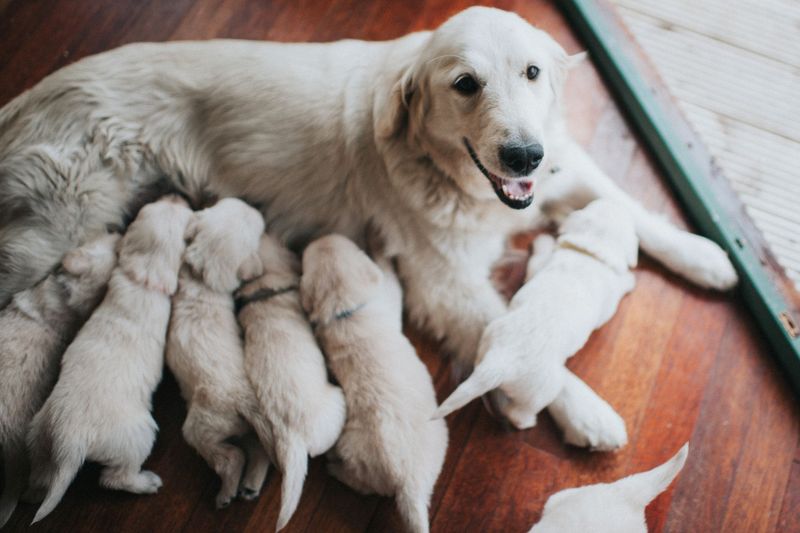
Wondering about the time gap between litters? Typically, dogs should wait at least a year before having another litter.
This waiting period allows her to recover and regain strength. It’s like a well-deserved break after an exhausting marathon.
Ensuring her health and wellbeing is paramount. Consult with your vet for tailored advice. Respecting this time frame ensures her long-term health. It’s about balancing love for puppies with care for the mom.
14. Common Myths About Dog Pregnancy, Busted

Dog pregnancy is shrouded in myths. One common myth is that a dog can’t get pregnant during her first heat cycle. In reality, it’s entirely possible.
Another myth is that dogs always know how many puppies they’re carrying. This isn’t accurate; ultrasounds are needed for a count.
Understanding the truth helps in better preparation. It’s like debunking old wives’ tales for clarity. Educate yourself to provide the best care. Busting these myths leads to informed decisions and happier dogs.
15. Special Considerations For Small Vs. Large Breed Pregnancies
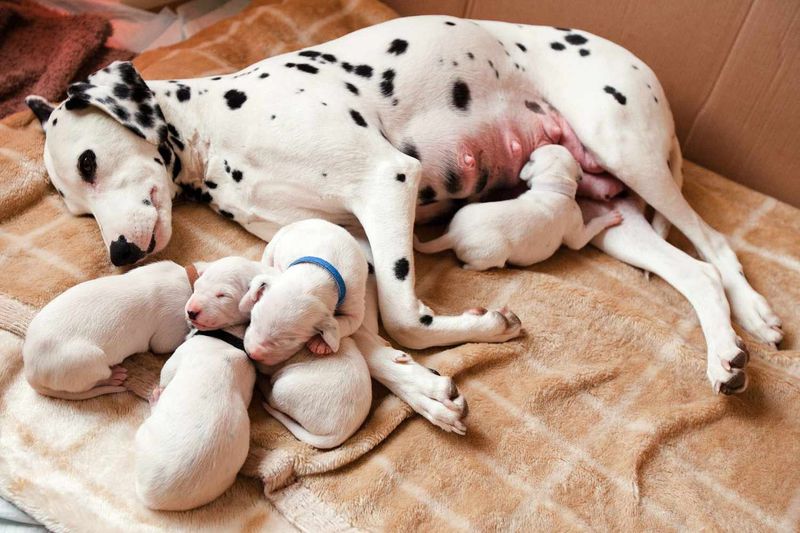
Small and large breeds experience pregnancy differently. Small breeds may face more complications due to space constraints.
Large breeds, while accommodating more puppies, require different care levels. Understanding these differences helps in tailored care.
It’s like customizing a recipe to fit varying ingredients. Both require unique attention to nutrition and health. Consulting with a vet ensures the best care plan.
This knowledge empowers you to support your dog effectively. Each breed’s journey is unique, and so should be the care approach.






